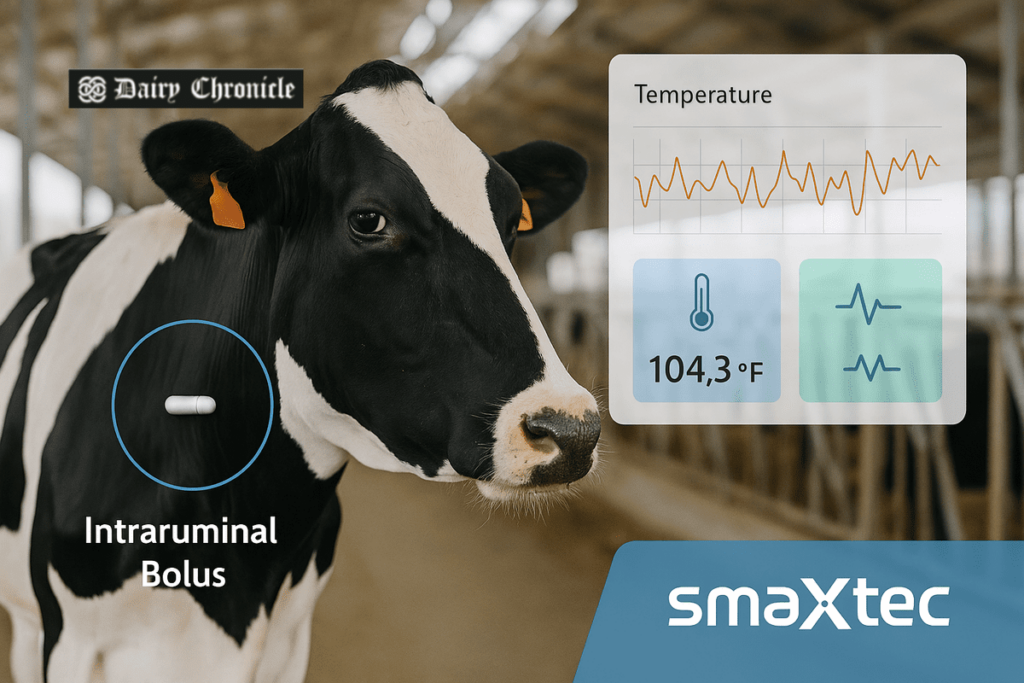A new study by Michigan State University (MSU) has found that smaXtec’s intraruminal bolus can detect bird flu (HPAI H5N1) in dairy cows up to one week before symptoms appear. This early warning system could dramatically reduce the health, productivity, and financial toll of disease outbreaks on U.S. dairy farms. The study, conducted on a 500-cow farm in Michigan, showed substantial reductions in milk yield, feed intake, and overall herd health during the outbreak. With an average loss of $504 per infected cow, the total financial impact exceeded USD 79,000. smaXtec, a global leader in dairy health monitoring, uses internal temperature and activity tracking to provide real-time health alerts, enabling farmers to respond proactively.
A groundbreaking study by Michigan State University (MSU) has revealed that smaXtec, a global leader in dairy health monitoring, has developed a bolus capable of detecting bird flu in cows up to one week before any visible symptoms appear. This technological breakthrough could reshape the future of dairy herd management across the United States.
smaXtec’s intraruminal bolus, a small device placed in a cow’s reticulum, continuously tracks internal body temperature, water intake, rumination, and activity levels. With a precision of ±0.018°F, the system sends real-time alerts using artificial intelligence, giving dairy farmers an early warning system that can prevent severe outbreaks.
The study focused on a 500-cow dairy farm in Michigan that was affected by the highly pathogenic avian influenza (HPAI) H5N1 virus. Over a 45-day period, nearly a third of the herd showed signs of infection, leading to milk production losses, increased somatic cell counts, and long recovery times.
“The smaXtec bolus gave us a critical head start,” said Dr. Louisa Koch, Feeding and pH Specialist at smaXtec. “By detecting fever days before symptoms were visible, farmers were able to intervene early, minimizing losses and protecting the herd.”
Financial Impact and Recovery
The economic implications of delayed detection were severe. Each infected cow produced 2,235 pounds less milk, required longer care, and cost farmers an average of USD 504 in lost productivity. The total loss on the Michigan farm exceeded USD 79,000.
Recovery was also slow, taking an average of 132 days for cows to return to normal production levels. The findings underscore the importance of early detection and biosecurity in dairy operations.
Biosecurity and Long-Term Strategy
The MSU study emphasized that proactive health monitoring is now essential. With smaXtec’s bolus system, farmers can transition from reactive to preventive management, enabling quicker interventions, reduced antibiotic use, and improved animal welfare.
“This is no longer optional,” added Dr. Koch. “smaXtec provides the data-driven insights needed to combat modern herd health challenges, especially with threats like bird flu becoming more common.”
About smaXtec
Headquartered in Austria, smaXtec is a pioneer in smart dairy farming technology. The company’s patented bolus system offers dairy farmers real-time access to key animal health data through its TruAdvice™ AI platform. By detecting diseases at the earliest possible stage, smaXtec helps reduce treatment costs, minimize milk losses, and support sustainable dairy production globally.
For more information, visit smaXtec.com.



